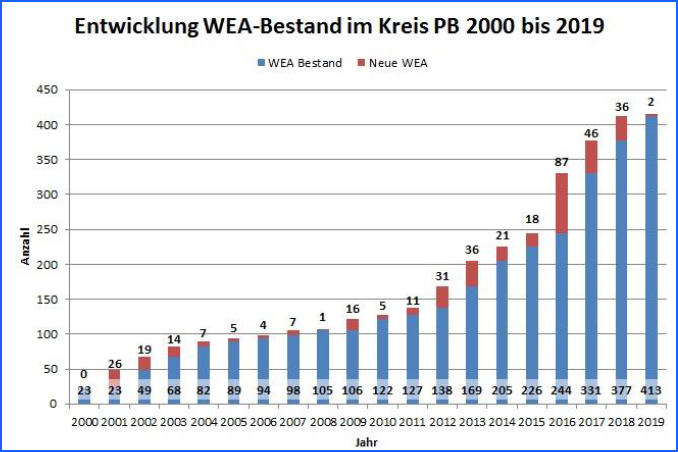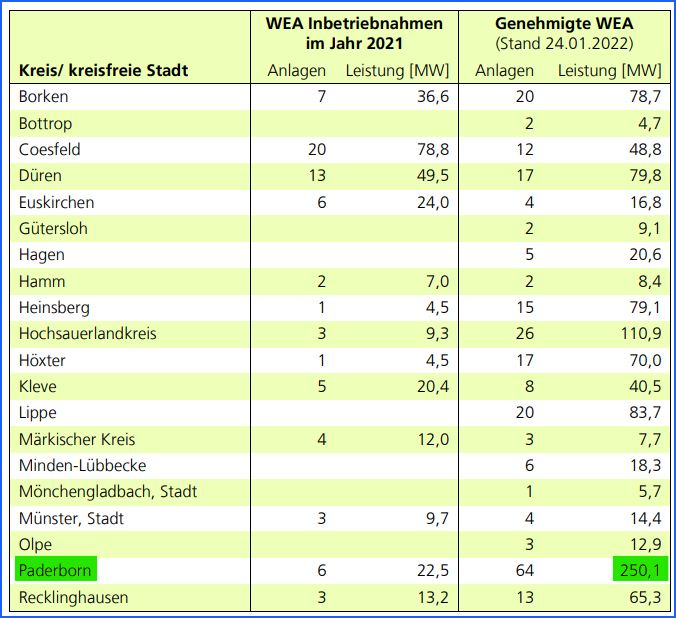Lack of rain - Have we caused our own lack of rain?
This is the question one has to ask oneself if one takes a closer look at the topic of climate, weather and numbers. Even if it may be difficult for some to believe this, the evidence clearly indicates that this is the case. A detailed literature review on this topic can be found here: "The Wind Mania and its Climatic Consequences."
How rain is made:
The basic principle of the global water cycle is based on the fact that water can easily change its state of aggregation. The circulation of water begins in a simplified way at the ocean surface, where large quantities of water evaporate, rise as water vapour into the troposphere and are carried away by the wind. With increasing altitude, it becomes colder, the water vapour condenses and clouds form. The denser the clouds become, the more water they contain. As they continue to rise and cool, rain or snow falls.
According to generally available sources on the water cycle, only about 7-8 % of this water mass (about 40,000 km³ by means of clouds) reaches the mainland, the rest rains down again over the sea. Approximately the same amount of water also flows back into the sea via the rivers.
Water scarcity therefore already occurs when only a small amount less rains on the land than flows off!
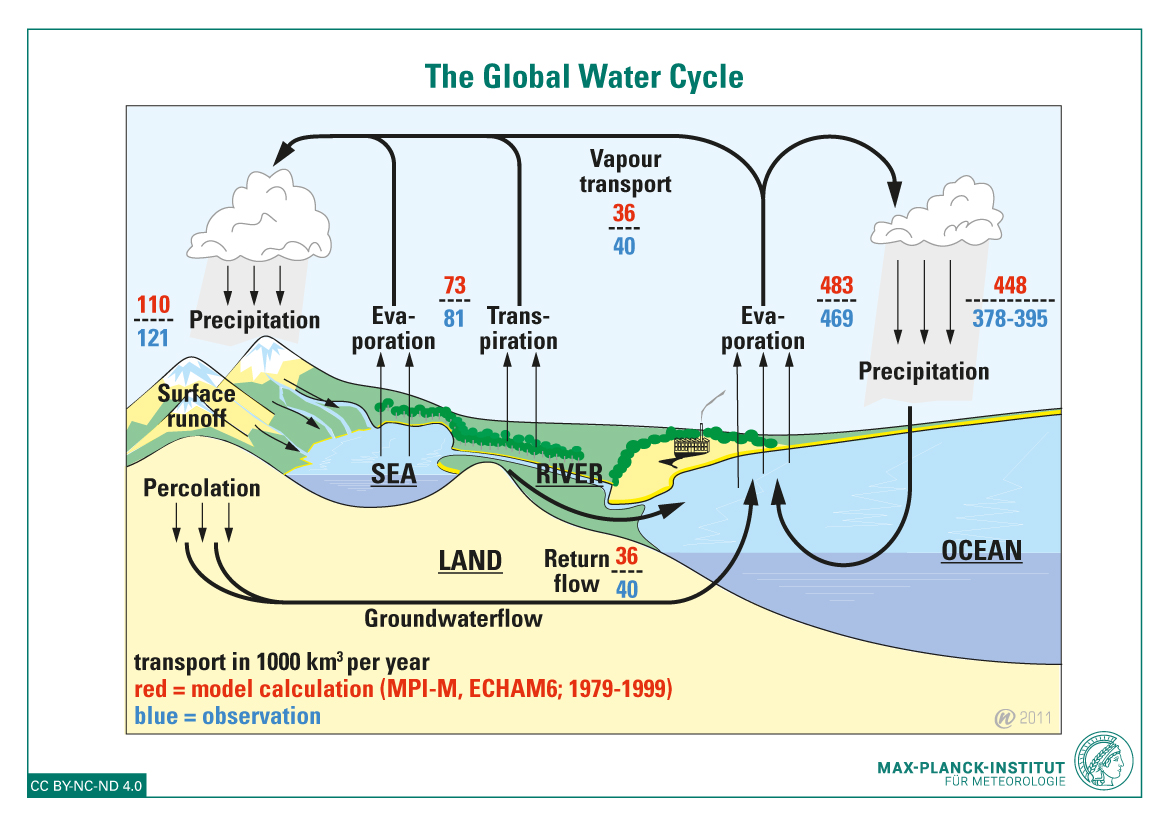
This cycle has functioned stably for centuries and it should be undisputedly true that the wind is the basis for this functioning water cycle. Or should we say that it has represented it?
Wind is created as a result of pressure equalisation between high-pressure and low-pressure weather conditions. This wind carries the water vapour and the water-containing clouds over the mainland and distributes them evenly over a wide area there, provided the wind is free to do its job.
However, the energy of the wind is not infinite, as many people think. If it is deprived of energy by wind turbines, it is slowed down and can no longer fulfil its task - namely the distribution of clouds - as it should.
In the end, it is similar to slowing down the flow of a river by inserting river bricks.
Global wind energy capacity
In recent years, the installed wind energy capacity worldwide has doubled to around 837 gigawatts, in Germany to 132 terrawatts. These enormous amounts of energy are missing for the wind to distribute water over the mainland.
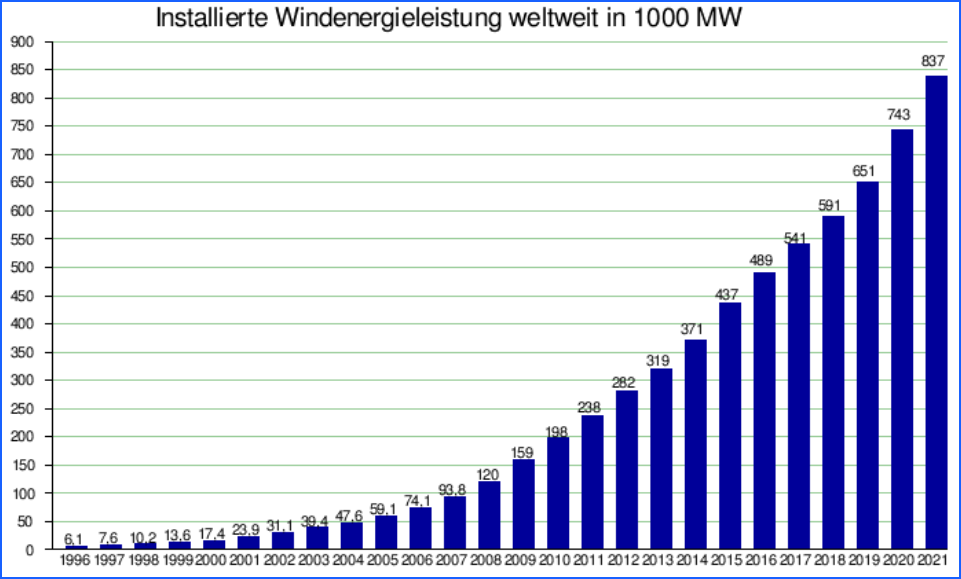
However, the wind is not only missing for transport, it is also missing for the distribution of water vapour, which increasingly leads to highly concentrated water masses in the clouds and thus increasingly to downpours during thunderstorms. It is also interesting that the rain clouds in the German Alpine foothills no longer come from the north, but mostly from the west or south over France.
Or is it just a coincidence that the lack of rain and weather extremes have only become so noticeable in recent years, especially where there are many wind turbines, such as in China, Australia, the USA and here in northern Germany?
Example wind power situation in Paderborn
The table below (onbly available in German Language) shows the accumulation of wind turbines in the district of Paderborn. At the beginning of 2022, the approved wind turbine capacity was 250.1 MW.
Another particularly meaningful indicator is the installation density or capacity per area. Here, the district of Paderborn is in third place (as of 30.06.2022) in the absolute top field in Germany with 825 kW/km². Higher installation densities are only found in the Schleswig-Holstein districts of Nordfriesland with 1,086 and Dithmarschen with 1,314 kW/km².
Newton's law states: Actio est Reactio!
Obviously, this simple basic knowledge has been replaced by ideology among many politically active people.
In the Paderborn area, there has been a precipitation deficit since 2008 - with the exception of 2017. In total, the annual deficits over 10 years amount to more than one mean annual precipitation.
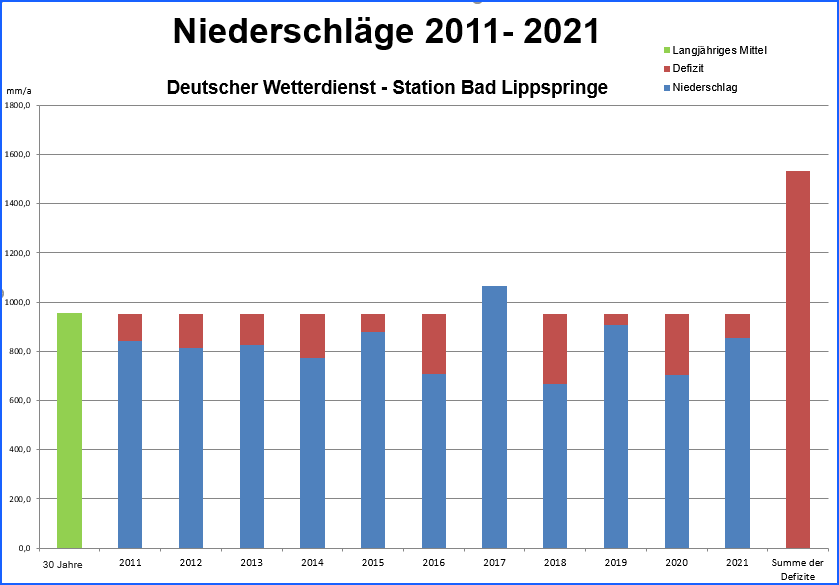
You don't need to be a prophet to be able to estimate what effects the strong increase in wind turbines is likely to have on the development of precipitation in Paderborn and beyond. In any case, not good ones!
Prognosis: The use of wind energy on such a large scale (the end of the line is still a long way off!!!) will in all likelihood turn out to be one of the biggest mistakes of the energy turnaround, as it represents an immense intervention in natural processes, influences the microclimate and causes ground temperatures to rise, because wind also transports accumulated heat away from the cities.
So the question arises: how ecological are wind turbines really, and above all:
Are wind turbines the new nuclear power plants?
In addition to the climatic impacts, the effects of wind turbines on birds and insects are already enormous: around 8 % of the population of buzzards already die annually from wind turbines in northern Germany. In addition, there are 250,000 bats and billions of insects. And by the way, this question also arises with biogas plants, which have become the number one insect killer next to wind turbines due to the extreme green biomass and the lack of flowers on huge areas of land (next to the practice in agriculture of no longer haying, but only baling silage).
And yet the potential of photovoltaics and the thermal use of solar energy are only marginally exploited. There is a huge field of activity slumbering here. Many old heating boilers, which in many houses still produce hot water in summer with oil or gas, could be exchanged or replaced etc., which would mean direct CO2 reduction. In order to realise this, however, the ideological glasses have to be taken off.
A further expansion of wind power, as demanded by many so-called "climate protectors", will therefore probably bring about exactly the opposite of what is wanted.
Conclusion: Wind power should be immediately cancelled as a regenerative energy and further expansion stopped.



